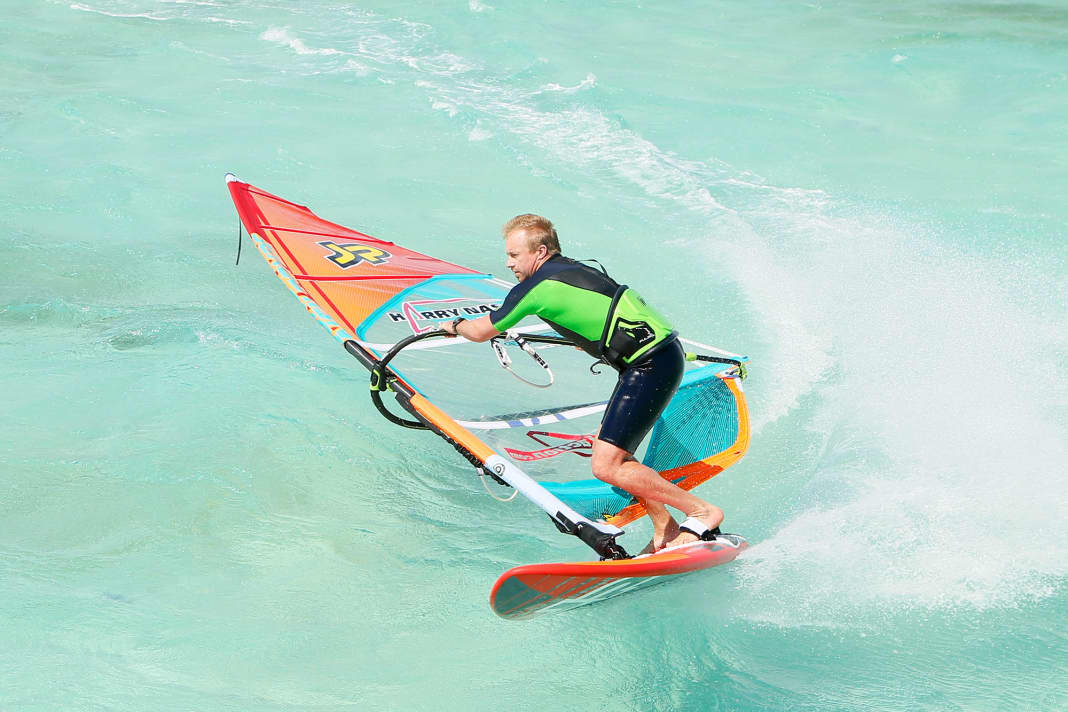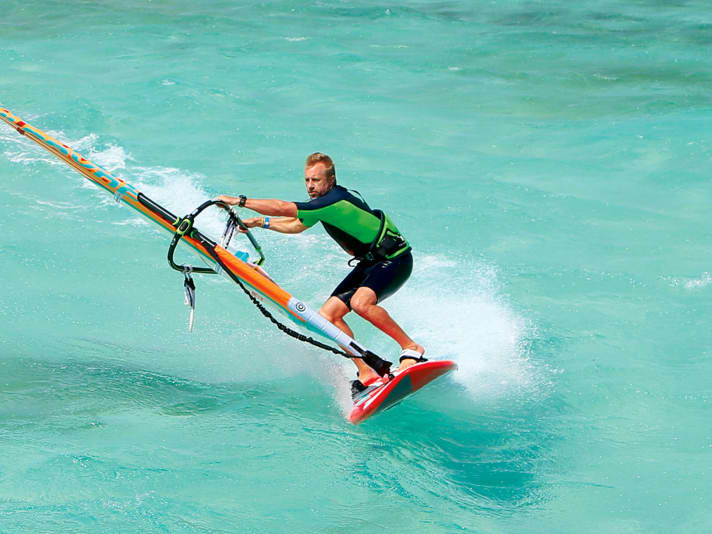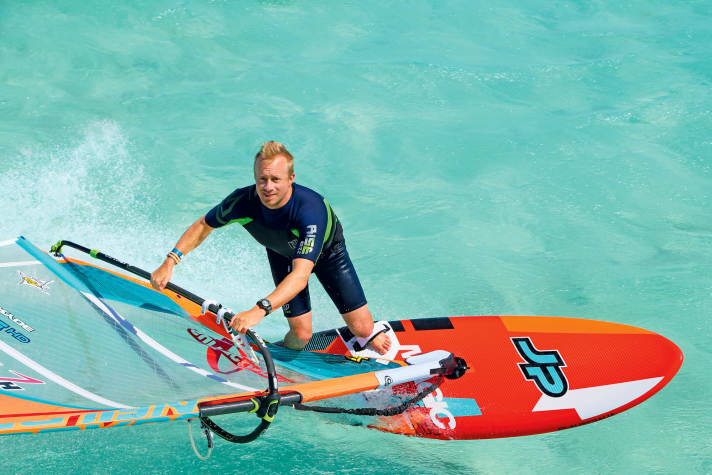





- Ideal conditions: 5-7 Beaufort, well powered
- Ideal equipment: freeride, freerace or slalom boards, high-performance sails
- Learning requirements: Power neck
Fully planed and ridden with a wide radius - these are the key features of the sportiest jibe variant. The strong inside curve - which is the main difference to the more moderate power jibe - makes it possible to put a lot of pressure on the edge and carve as if on rails, even on boards with a wide tail and loops that are far out (e.g. freerace or slalom). In the gallery above, we explain step by step what you need to pay attention to when carving a jibe!
Control of the carved jibe with wide boards
Slalom or freerace boards are often very wide, which makes it difficult to control the edge, especially in choppy waves and strong winds. There are two things that make your board run like it's on rails, however, because they allow you to exert more pressure on the edge:
- The already described template of the body (pictures 3 to 5 in the gallery above).
- Pushing the knees forwards ("knee thrust", picture below)

Focus: The lower leech on the shin
The Grim Reaper is not always evil - in the case of the Carving Jibe, he is even necessary! You can only achieve maximum propulsion and the all-important inboard body position if you fully tighten the sail with your back hand and let it pull you into the turn (long mast arm). From the additional perspective it becomes clear that the sail then lies flat on the water, the lower leech "sinks" once against the rear shin (see below). If you are currently practising this manoeuvre, try to focus on the following aspects during your next session: Initiate with full speed, stretch the mast arm, pull the sail to the shin!

